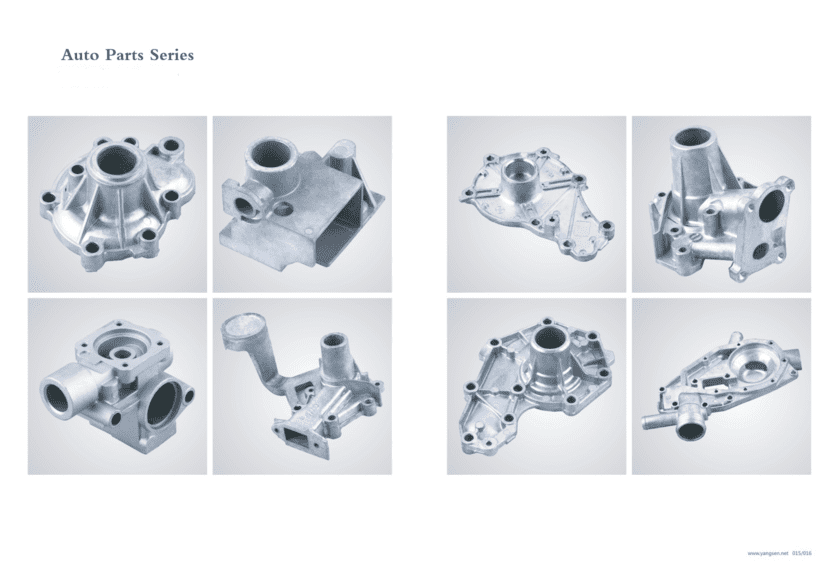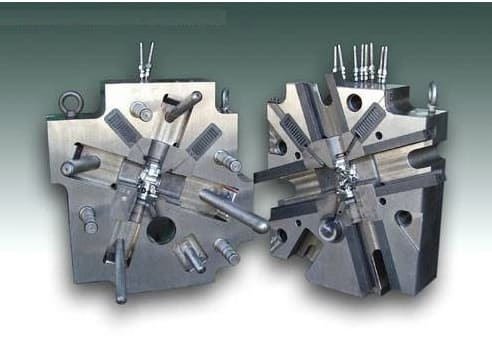Several industries use aluminium die-cast parts because of their impressive features, such as light weight, corrosion resistance, etc. It has a booming market. So, you may want to know how to make aluminium die castings. Right?
That is what we will show you here. We will explain the step-by-step processes to make aluminium die castings.
Follow closely.

How you can make aluminium die casting
This involves the following processes:
This is a general outline of the step-by-step processes. What more? We will now consider these processes in details.
Okay so, let’s dive in!
(1.) Preparation of mold
The first step to manufacture aluminium die-cast parts is to prepare the mold. The mold is known as the tooling. The mold contains the mold cavity and allows the mass production of aluminium die-cast parts.
The mold design determines the dimensions and contours of the casting. It affects the configuration, shape, uniformity and quality of the castings.
So, before preparing the mold, you should consider the dimensions and geometry of the castings you want to manufacture. You should calculate the design of the mold according to the size of the casting.
To make a mold, use a material with higher strength and melting temperature than aluminium. If not, the die can get damaged during the casting process.
To design the mold, you can use the 3D CAD/CAM systems. Computer-aided simulation calculation will help you make the mold optimally adapted to the die-cast parts.
The mold should have two halves so that you can open and close it. This is also to ensure that the castings can be removed from the mold easily.
The first half is the stationary die half that you will mount on the die casting machine’s fixed plate. The second half is the ejector die half you will fix to the movable fixing plate.
The parting line separates the two halves. Ensure you place the parting line at the proper place. Otherwise, the production materials may seep down the gap between the mold pieces, thereby causing irregular molding and excess seaming.
You can also add the fillets to almost anywhere on the mold. Though except in the parting line. You can use the fillet to smooth and angled surface to avoid any hindrance in the casting process.

(2.) Making the gating system
The gating system is the channel through which the molten metal flows to the die cavity. It allows seamless flow of molten metal from the ladle to the mold cavity.
The various types of gating systems include horizontal, vertical, top gating, middle gating and bottom gating systems. The gating system contains the sprue, runner, sprue well, the pouring basin and the ingate.
The sprue reduces heat loss and turbulence. It reduces the free molten metal by directing the metal at a correct angle to the runner.
If the gating system has more than one ingate, you should let the runner’s cross-section area be lower after every ingate connection. This will allow energy flow of the molten metal.
The ingate is to direct the liquid to the die cavity. Ensure you design the ingate to allow easy fettling. The molten metal flow from the ingate should also be proportional to the casting area’s volume.
(3.) Lubrication of the internal surface
Die casting systems needs lubrication. This is because of the thermal stress they experience when exposed to molten metals at high temperature
So, you need to apply lubricants to the mold surface. This will increase the film formation and wetting on the mold surface. It will prevent the molten metals from sticking to the molds.
The lubricant acts as die casting release agent, and will help reduce the possibility of pitting or corrosion of the mold surface.
When lubricating, avoid using insufficient or excess lubricant. Excess lubrication can result in failure of evaporation, porosity and bad surface finishing of the die castings.

(4.) Holding of the molds in the die casting machines
This refers to placing the mold in the die casting machine. When injecting the molten metal, you need to use enough force to hold the two halves of the mold together. While doing this, because of the high pressure on the molten metal, it can separate the two halves.
This is why you need to hold the molds together in the die casting machine. This will enable the mold to withstand such forces. The casting machine will keep the mold halves locked together during the die casting process. It will prevent opening or springing back which may cause liquid metal to squirt out.
Different machines have different range of forces they can withstand. The clamping force varies from as low as 25 tons to 3000 tons.
(5.) Injection of the molten metals into the chamber
At this point, you would have to apply the molten metal into the die casting machine. There are two methods you can use to do this, which are:
(a.) Hot chamber die casting
Here, you will use the hot chamber die casting machine, also known as the gooseneck machine. It involves the following:
– You would have to place the molten metal into a furnace and then melt it.
– Thereafter, the machine will lift the piston or plunger so that the molten metal can enter through the intake port. This will push the plunger downwards so the melted metal can touch the nozzle
– You will keep pressing the plunger until the die cavity fills up with the liquid metal.
– Allow the liquid metal to solidify inside the cavity before you use the ejector pin to eject the solid part
Note that the usual injection pressure for hot-chamber die casting machines is between 1000-5000 ps.
(b.) Cold chamber die casting
You will use the cold chamber die casting machine here. It involves the following:
– Firstly, you have to liquefy the molten aluminium in a separate furnace
– Thereafter, you would ladle the molten aluminium into a cold die-cast chamber using a pouring hole
• The machine would force the molten metal into the cavity of the mold through the pressurised plunger.
– The components will solidify under strong pressure.
– You can then remove the patches of the mold.
– Use the ejection pin to remove the gate from the mold. This would cause the plunger to retract.
So, you can use either the hot or cold chamber die casting.

(6.) Solidification of the die casts
Before ejecting the die cast from the mold, ensure the cavity is solid. If the raw material is still in liquid form, you need to let it cool off before ejecting it.
(7.) Removal of the die casts
After solidification, you can now remove the die casts from the machine. Thereafter, you need to apply the lubricant again on the internal surface before clamping the die together
(8.) Trimming
You should remove excess scrap metal from the casting as it continues to cool off. Cut off sharp edges and excess materials to make the production suit your specification.
(9.) Machining
This is an important aspect of die cast production. You will need this to create more intricate features that can not be produced during the casting process. It helps you to manufacture die castings with tighter tolerance, complex geometry, and odd or extremely large shapes.
You will use the computer numerical control (CNC) machine for machining. This involves automating the control of machine tools by using software embedded in a microcomputer attached to the tool.
Machining will help you sculp parts from the die castings to give them better precision, dimension and accuracy, especially if they are highly customised.
(10.) Finishing
This is the last stage of aluminium die casting. The various surface treatment options you can use include: powder coating, chemical film, anodising, etc.
You can apply powder coating as a dry powder and then heat it. It gives flexible, high-quality finishes. The two types of powder coating are thermosets and thermoplastics.
Chemical Film is a chemical conversion coating in which chromate is applied to aluminium. You can apply it by dipping, spraying, or brushing it. You can use it to passivate aluminium as it protects the metals. The different types of Chem film are AMS-2473 & 2474, MIL-C-81706, MIL-DTL-554, and AMS-C-554.
Anodising refers to an electrolytic process for producing thick oxide coatings on aluminium. It converts the metal surface into a decorative, corrosion-resistant finish. The aluminium is immersed in an acid electrolyte bath.
Also, a cathode is mounted to the inside of the anodising tanks. The electrolyte release the oxygen ions. The ions will combine with the aluminium atoms at the surface of the part being anodised
Conclusion
We have explained the sequential steps involved in making aluminium die casting. It may appear as though the production processes of aluminium die casting are cumbersome. However, this is not really the case. The processes are quite seamless and you can make bulk productions.








